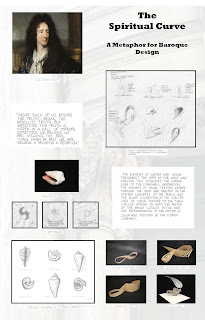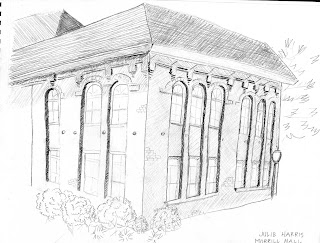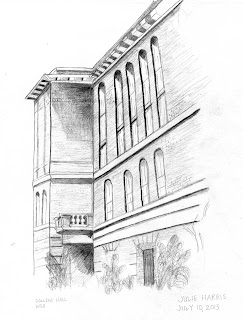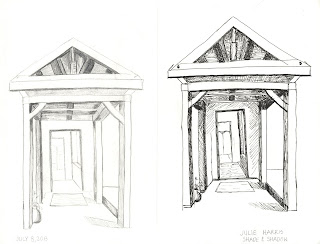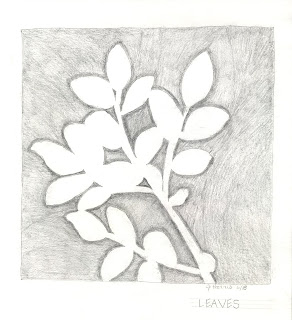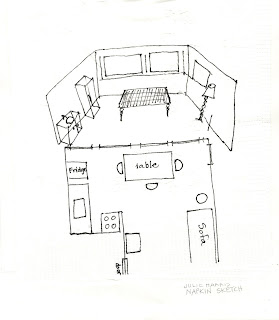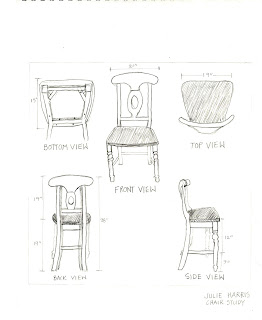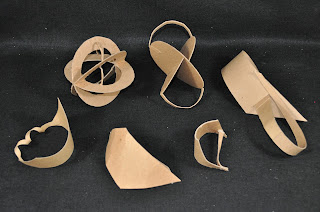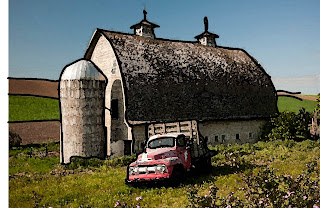After researching Baroque architecture, and creating abstract forms, it was time to create something new from these abstractions. I did a seat and shelter structure.Above are the drafted drawings of my structure, and the materials I envisioned using. I incorporated the visual texture in the stained concrete, and textured canvas of the awning.Here is the model I made to a 1'0"=1" scale.
Finally, I also drafted a plan view, and did a rendered sketch of my model.The photos on this poster are taken at 9am, noon, and 4pm to show the progression of the sun on the shelter. If I were to build this, I would shift the orientation, so that the shade would be over the seat.



